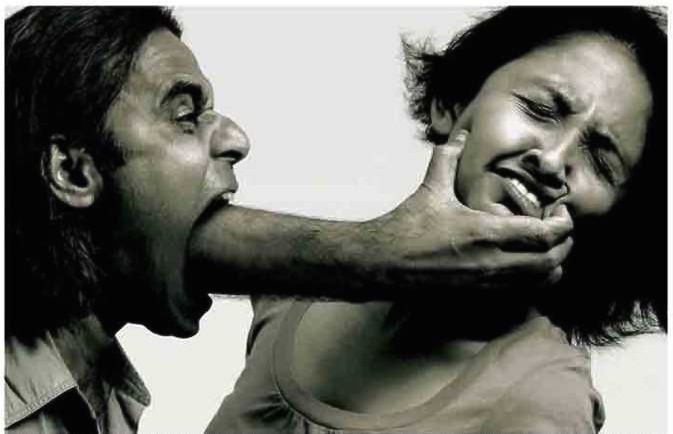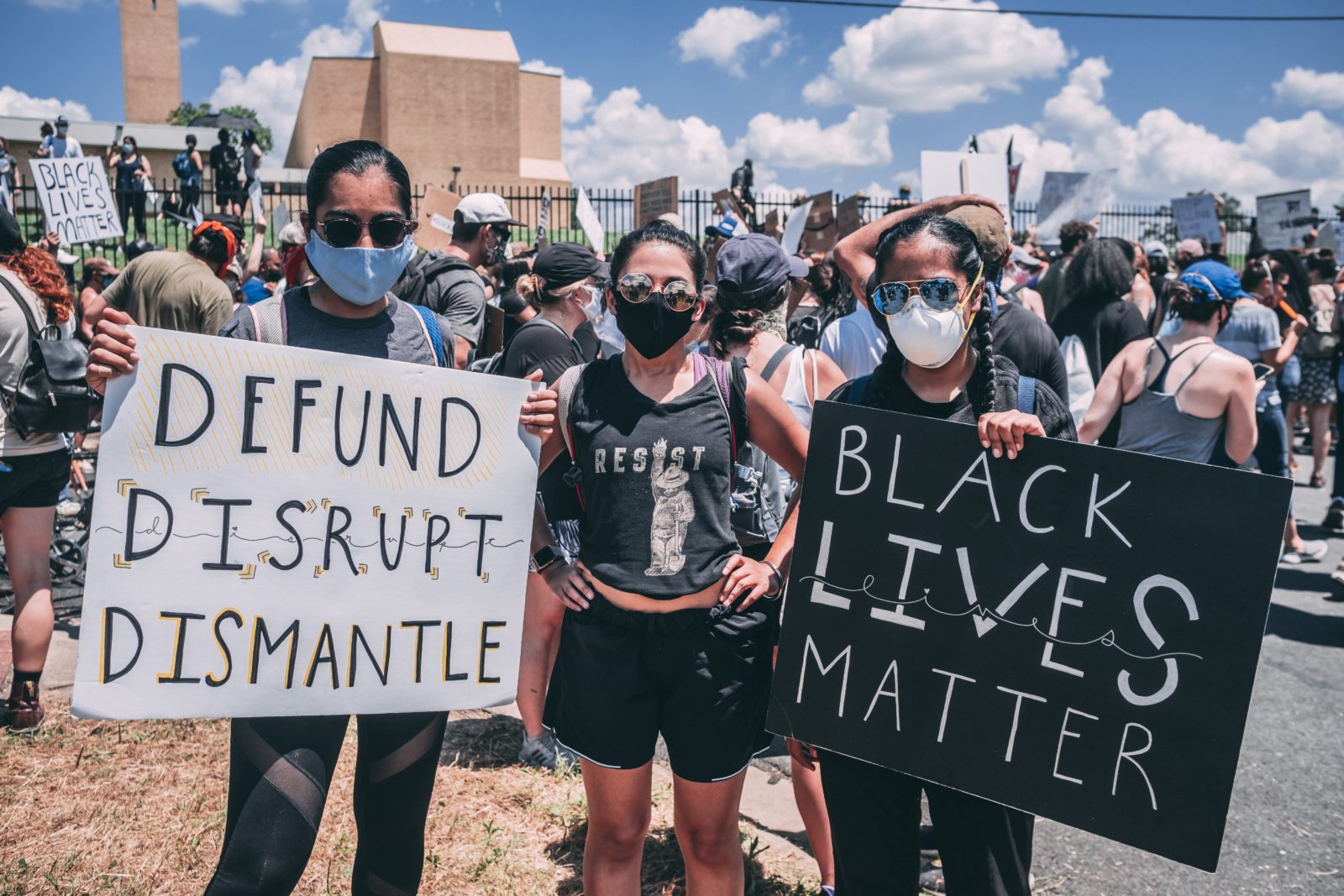This article is part of Kaur Life’s Black Lives Matter series created by Kaur Life board members and project advisors. Be sure to check out all of the articles.
Article 1: Should Sikhs Care About Black Lives Matter?
Article 2: Why Should Kaurs Support BLM?
Article 3: How Does anti-Blackness Show Up in the Sikh Community?
Article 4: How and Why do Sikhs Align with Whiteness?
Article 5: How Sikhs Can Become Anti-Racist and Support Black Lives Matter
The immigrant experience taught many of us Punjabi Sikhs to work hard, keep our head down, assimilate, and not to rock the boat in America. “Maybe if we are ‘good’, we will be able to climb the social and racial ladder to security,” we think. “Maybe we can protect our families from racism if we toe the party line.” This is the unspoken understanding for many. In adopting this thinking, we end up distancing ourselves from other people of color and end up being silent on issues like Black Lives Matter.
Why do we think and act like this? In part, it is because we have been taught to, and we have been rewarded for it by white supremacist structures*.
What does it mean to “align with whiteness”
Aligning with whiteness is not the same as having white friends. (There’s nothing inherently wrong with having friends who are white). Rather, aligning with whiteness means aligning with a power structure and a culture that is built around protecting & maintaining white power and privilege.
“Aligning with whiteness” means we participate in the social contract of the world that allows white supremacy to dominate and run how we make decisions. (To learn more, check out “Racial Contact” by Charles Mills.) It shapes how we determine whose life matters, what values we place at the forefront, and what is considered normal for people of color (POC).
This becomes detrimental because the subtext is we value our own lives as people of color, and our own opinions, and our lineage less. Some wealthy/privileged POC align with whiteness because they can still gain a lot by doing it and then, they end up being bystanders or active perpetrators of the deaths of Black, indigenous folks instead.
We Distance Ourselves from Black People
“As a South Asian…I have witnessed how my own culture somehow feels closer to whiteness, thinking [that] living in white neighbourhoods, acting and speaking like white people, and staying silent on racial matters will somehow bring more power and privilege,” Meera Estrada writes.
We’ve noticed sometimes Punjabis try to distance ourselves from Black people, Indigenous peoples, other communities of color, or racialized groups. Perhaps it is in hopes that this distancing will protect us from the oppression and injustices they face. This fear of association coupled with a desire to “make it” drives us away from other minorities and towards the goal of “becoming white.” In doing so, many of us have aligned ourselves with whiteness (inadvertently or intentionally).
The act of Sikhs aligning with whiteness isn’t a new phenomenon. Sikhs may have adopted a version of the “model minority” as early as the 1800s in Punjab. For example, Sikhs of the 1700s were described by travelers and authors as wild, “rough-mannered rogues, living in the saddle, brusquely chasing interlopers from their territory.” But then, the British came and Sikhs traded in their sovereignty for the comforts of being a model minority. In order to divide the peoples of India and to recruit Sikhs into their army, the British crafted a narrative which narrowly defined Sikhs as a natural martial race. They asserted that Sikhs were “well-suited” for the Imperial Army. By the mid to late 1800s, Sikhs were frequently described as loyal, reliable, and hardworking subjects “…an illustration of their new position as citizens…of a conquered Punjab within the British Empire,” write Amandeep Singh Madra and Paramjit Singh.
Trying to create space between ourselves and other people of color today can be seen as an extension of our colonized behavior.
We Uphold the Myth of the Model Minority
To gain favor with white society, some Punjabi Sikhs couple this distancing with an adoption of the myth of the model minority (aka the model minority myth). The myth of the model minority states that Asian Americans (particularly East Asians), are the “ideal” minority because they are (allegedly) polite, law abiding, hardworking, and have prestigious careers.
There are several problems with this mythology.
1. It Creates a Racial Hierarchy
The myth of the model minority supposes that Asian Americans are pathologically superior to Black Americans. For instance, many white people point to Asian America’s perceived collective success and say, “Why can’t Black people be like that? Asians must have the ‘right cultural stuff”.
The perception that Asian Americans are universally successful is used to down-plan racism’s role in holding down Black communities. It also diminishes the persistent struggles endured by Black Americans and that of other minority groups.
2. It Perpetuates the Status Quo
The myth of the model minority rewards minorities for upholding white structures and the status quo. Our society has illustrated time and time again that compliance with, rather than opposition to, the state would bring rewards. For instance, if you act in a way that is preferable to white structures and deemed “appropriate” for your race, you might get promoted at work. It also punishes minorities for acting in a way deemed “inappropriate” for their race. For instance, being pulled over by the cops for having loud music, or getting the cops called on you for bird watching the park, or being targeted by TSA for wearing a dastar.
3. It Pits Minorities Against Each Other
The myth of the model minority drives racial wedges between communities of color. “I’ve heard brown kids… boast about how themselves and their parents ‘did it right,’” writes Aysha Tabassum, “and that if Black kids wanted to, they could just prove white people wrong in their racist assumptions.”
This narrative causes divisions within minority communities. “I have even heard some Asians turn their nose up at the plight of the Black community, to the extent of blaming them for not working harder to change negative perceptions in society,” writes Meera Estrada.
This erases our interconnected struggles and histories. Neeha Elety says it further perpetuates the idea that people of color need to assimilate and prove ourselves to receive respect in America and around the world. And, when minorities are divided, we have a harder time coming together to overthrow oppressive white supremacist systems.
4. It Excuses Racism
In the 1960s, some white Americans wielded the myth of the model minority to hold back Black social movements. They would point to Asian Americans doing well as “proof” that there was equal opportunity in America for people of color.
The myth of the model minority “…places the blame on Black folks for their hardships and excuses the oppressor and oppressive systems,” explains Sahaj Kholi. The idea is, “Since Asians are doing so well in America, America must not be racist.” This not only perpetuates racist ideology (that Black people aren’t “good enough” to do well in America) but it completely deletes the centuries of enslavement, prosecution, murder, and institutionalized racism Black communities faced that Asian communities did not.
5. It’s Not All True
There are many Asians in America who are not doing as well as the myth of the model minority would have you believe. Generalizations and studies lump Asians into one group and disregard the diversity and variation within Asian Americans. Differences in economic background, income, social position, physical health, and mental wellness, within the Asian American community are often overlooked because most data does not include or reflect information on individual countries of origin.
This hinders the funding and development of culturally specific programming that could address the challenges faced by Asian Americans. Ultimately, the myth of the model minority denies attention and services needed to improve the lives of Asian Americans who are experiencing adversity.
6. It Prevents Us from Taking Action
Embracing the myth of the model minority serves as a way for minority groups to police themselves. How often have you heard someone (or yourself) say the following? How often have you seen Sikh organizations and initiatives adopt these as central questions in their advocacy?
-What will people say?
-How will this reflect on our community?
-What will gore (white people) think?
-How can we make gore like and accept us?
Monitoring our own behavior through the eyes of power structures holds us back from expressing our faith and culture to its fullest, especially the parts and values that butt up against white supremacist culture and institutions. Internalizing the model minority narrative prevents us from being fully human and it prevents us from taking action against injustices.
In upholding our Sikh values, we cannot be afraid to upset the power structures. If we want to be visibily Sikh, rally for justice, demand civil liberties for all, we cannot be afraid to “look bad” in the eyes of the white majority. When Guru Arjan Sahib was building Sikh economic, political, and social power, while challenging state atrocities, did he say, “What would the Mughals think of me? I want to look good in their eyes”? No, obviously not. Guru Sahib’s actions were always with Waheguru in his heart and Gurmat values in mind. And he was put to death for that. That is our legacy.
Conclusion
If Guru Sahib can rebel against the Mughals, we cannot be afraid to rebel against the myth of the model minority . We should not be acting, thinking, speaking, or behaving in a way that simply appeases, acquiesces, or placates white power structures. This will not lead to social change.
When we as Sikhs adopt model minority thinking, consciously or subconsciously, we perpetuate stereotypes and start to internalize the narratives of racial superiority. Instead, we must build bridges with other communities of color to re-build systems that are designed to keep people down.
To start or continue your journey to become anti-Racist, check out our list of resources, actions, advocacy, and self-education you can engage in . We’ve also included a section on how you can challenge racism in your families, amongst friends, in sangat, and at Gurdwara.
*A note on white supremacy
From Harleen Kaur, Kaur Life Board member, PhD candidate in Sociology, studying white supremacy & institutional racism:
While our modern understanding of white supremacy is very much rooted in neo-nazi groups, like the KKK, white supremacy is as simple as the idea (explicit or unacknowledged belief) that white people are innately superior/deserving of better treatment/livelihood/etc.
White supremacy is “a political, economic, and cultural system in which whites overwhelmingly control power and material resources, conscious and unconscious ideas of white superiority and entitlement are widespread, and relations of white dominance and non-white subordination are daily reenacted across a broad array of institutions and social settings,” Ansley, Frances L. 1989. “Stirring the Ashes: Race, Class and the Future of Civil Rights Scholarship.” Cornell Law Review 74(6):993–1077.
Within that, we also have the counter force of anti-Blackness, or the idea that Black people (and other racialized people who are not white) do not deserve the same treatment, and in fact much worse.
This series was a collaborative effort between Kaur Life board members (Lakhpreet Kaur, Isha Kaur, Harleen Kaur, Dr. Mohan Singh, & Sukhjinder Kaur) and project advisors (Jaipreet Kaur & Darsh Singh). Be sure to check out all of the articles.
Article 1: Should Sikhs Care About Black Lives Matter?
Article 2: Why Should Kaurs Support BLM?
Article 3: How Does anti-Blackness Show Up in the Sikh Community?
Article 4: How and Why do Sikhs Align with Whiteness?
Article 5: How Sikhs Can Become Anti-Racist and Support Black Lives Matter





No Comments